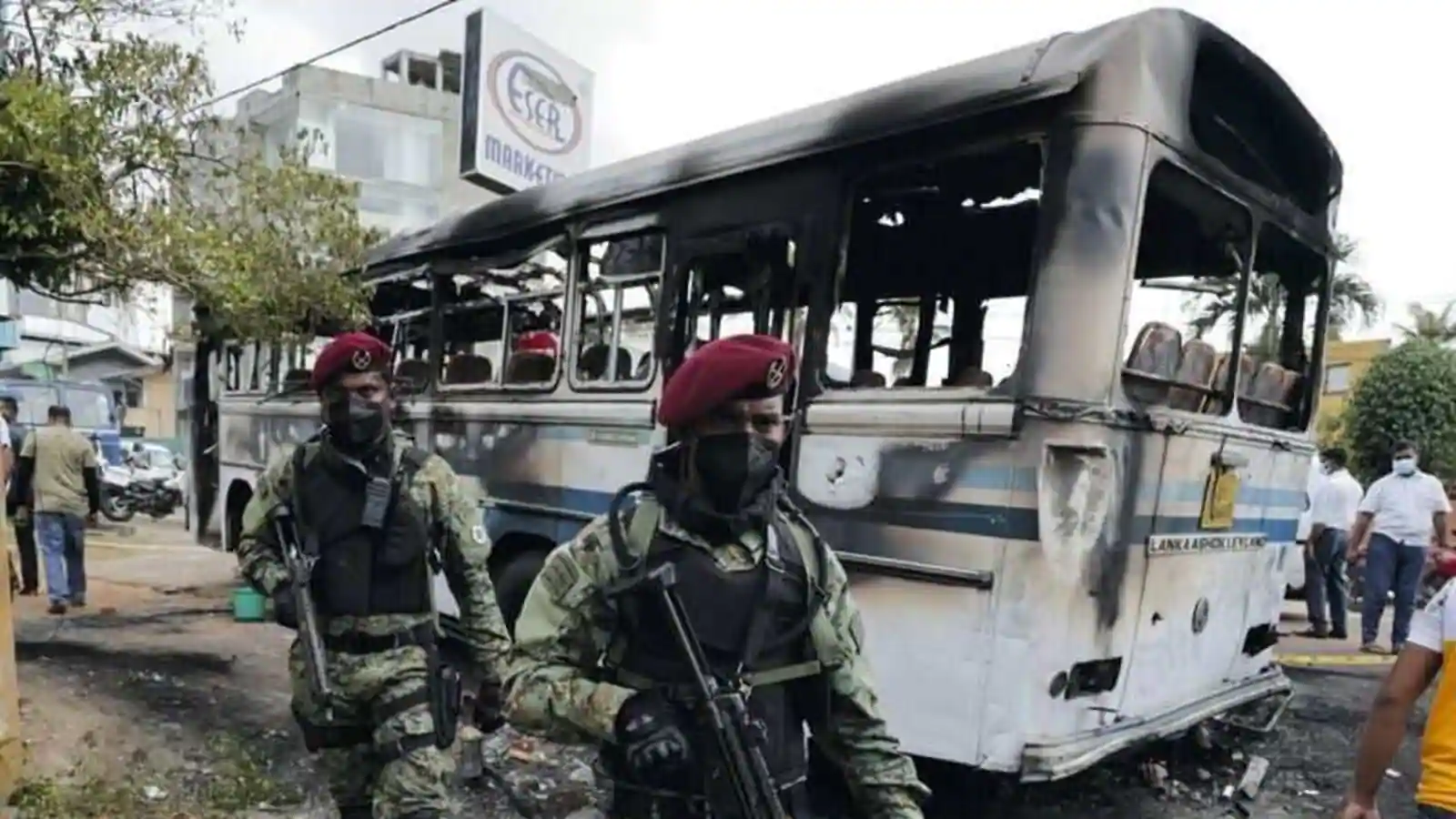Anger over Sri Lankan President Gotabaya Rajapaksa’s handling of the island nation’s mounting economic crisis degenerated into violence late Thursday, with hundreds of protestors clashing with police for several hours.

Due to a significant lack of foreign money, Rajapaksa’s administration has been unable to pay for basic imports, like as fuel, resulting in power outages lasting up to 13 hours. After the country depreciated its currency last month ahead of discussions with the International Monetary Fund (IMF) for a loan programme, ordinary Sri Lankans are also suffering with shortages and rising prices.
According to critics, the foundation of the crisis, which is the worst in decades, is economic mismanagement by successive governments, which established and maintained a dual deficit – a budget deficit as well as a current account deficit.
“Sri Lanka is a classic twin deficits economy,” according to a working paper published by the Asian Development Bank in 2019. “A country’s national expenditure exceeds its national revenue, indicating that its output of marketable products and services is insufficient.”
However, massive tax cuts promised by Rajapaksa during his 2019 election campaign and implemented months before the COVID-19 epidemic, which wiped out swathes of Sri Lanka’s economy, has worsened the present catastrophe.
With the epidemic decimating the country’s vital tourism economy and foreign workers’ remittances, credit rating agencies downgraded Sri Lanka, virtually shutting it out of international capital markets.
As a result, Sri Lanka’s debt management programme, which relied on access to those markets, fell apart, and the country’s foreign exchange reserves plunged by about 70% in only two years.
The decision by the Rajapaksa administration to prohibit all chemical fertilisers in 2021, which was subsequently overturned, harmed the country’s agriculture economy and resulted in a decline in the key rice production.
The government has just $2.31 billion in reserves as of February, but it anticipates debt obligations of about $4 billion in 2022, including a $1 billion international sovereign bond (ISB) due in July. The Asian Development Bank, Japan, and China are among the other main lenders, with ISBs accounting for the highest percentage of Sri Lanka’s foreign debt at $12.55 billion.
The IMF warned last month in an assessment of the country’s economy that public debt had reached “unsustainable levels” and that foreign exchange reserves were insufficient to cover short-term debt obligations.
Citi Research stated in a note late last month that the IMF report’s findings and the government’s recent efforts “weren’t enough to restore debt sustainability, signalling the need for debt restructuring.”
Despite mounting concerns, Rajapaksa’s administration and the Central Bank of Sri Lanka (CBSL) have rebuffed requests from experts and opposition leaders to seek IMF assistance. However, with rising oil prices in the aftermath of Russia’s invasion of Ukraine in late February, the administration devised a strategy to approach the IMF in April.
An IMF official said on Thursday that the IMF will begin talks with Sri Lankan authorities about a prospective loan package in the “coming days.”
Sri Lanka depreciated its currency sharply before going to the IMF, fueling inflation and aggravating the suffering of the populace, many of whom are suffering from hardship and lengthy lines.
In the meanwhile, Rajapaksa has requested aid from China and India, notably in the area of petroleum. On Saturday, a fuel cargo is anticipated to arrive under a $500 million credit line inked with India in February. Sri Lanka and India have agreed to a $1 billion credit line for basic imports such as food and medicine, and the Rajapaksa government has asked New Delhi for at least another $1 billion.
China is contemplating granting the CBSL a $1.5 billion credit facility and a separate loan of up to $1 billion after supplying the government with a $1.5 billion swap and a $1.3 billion syndicated loan.
